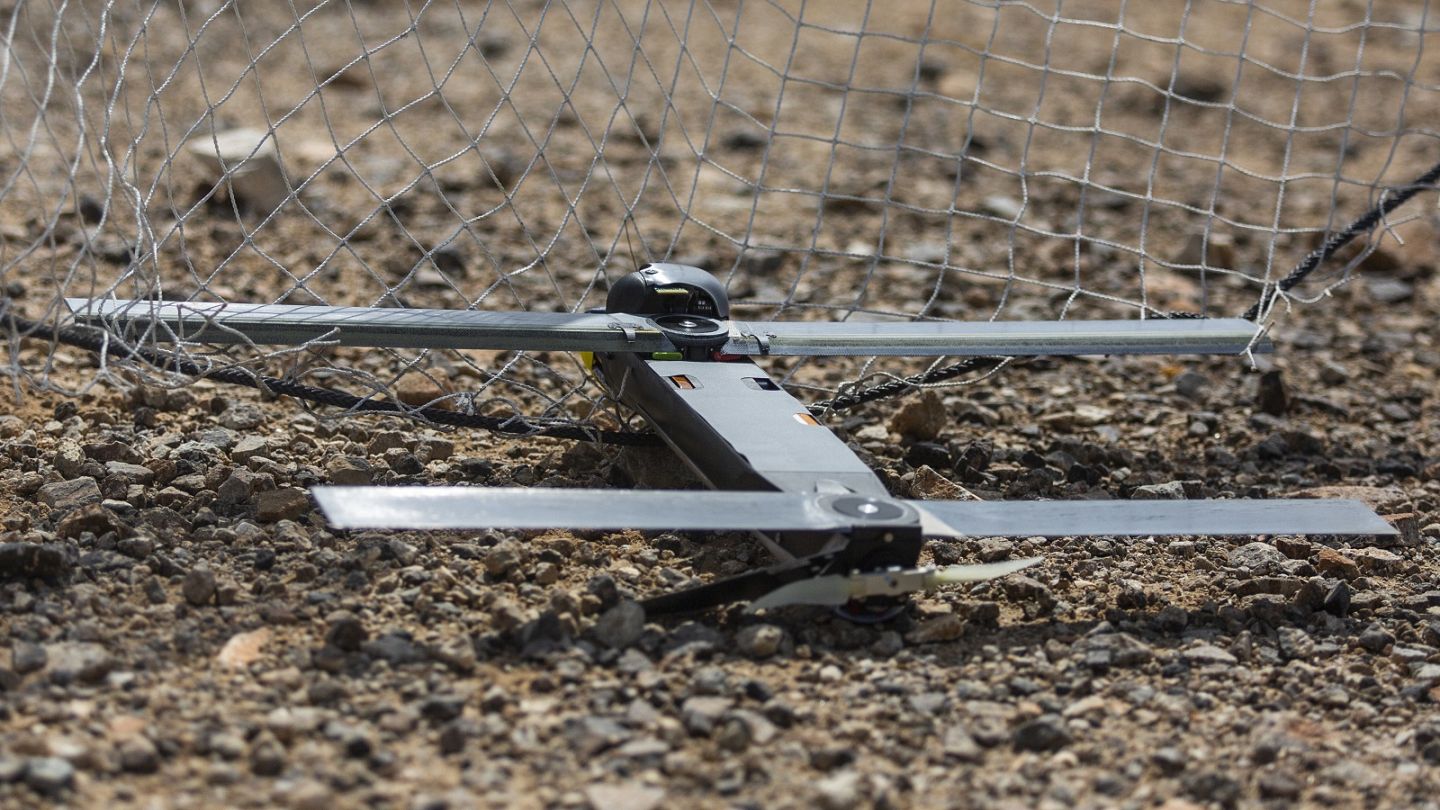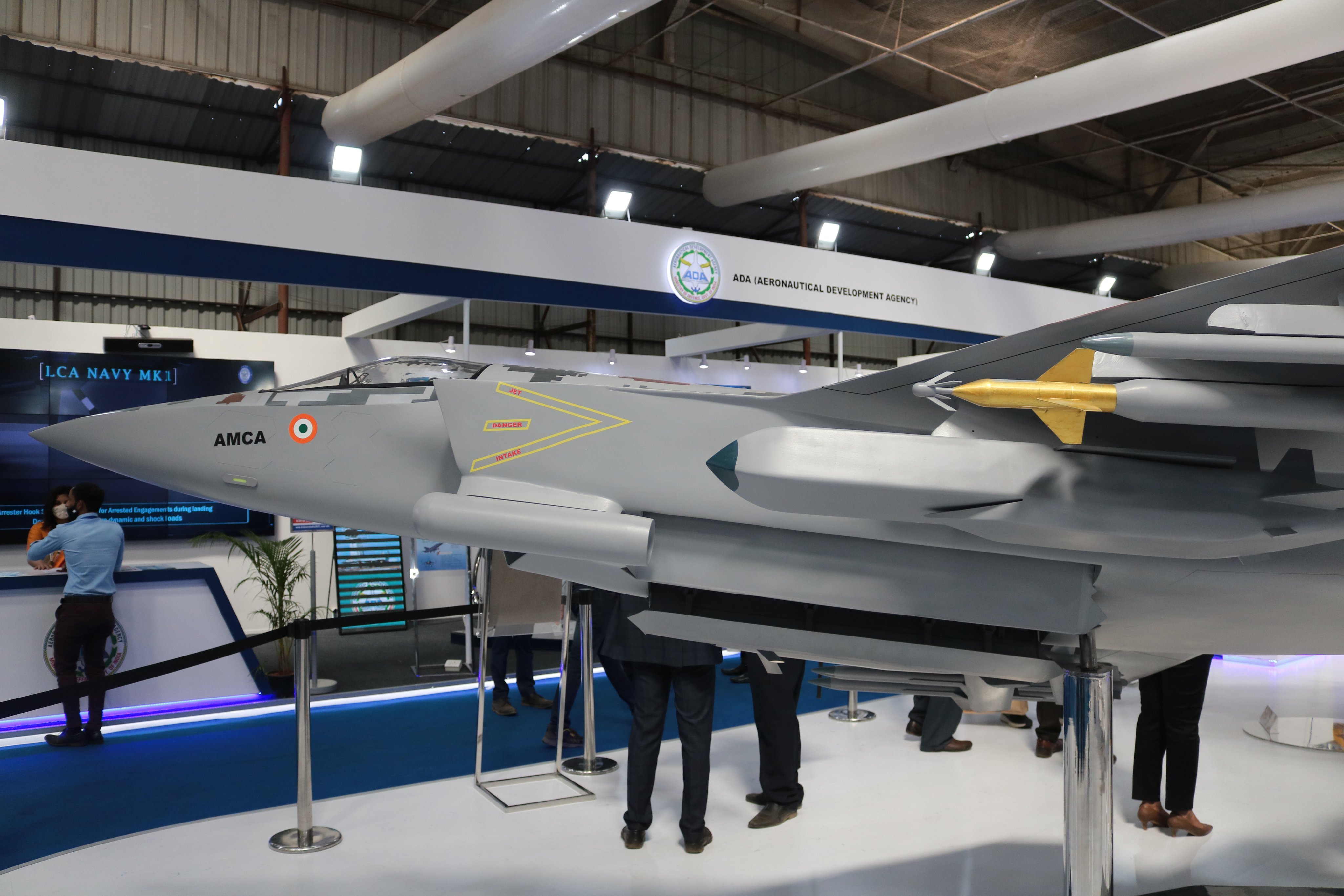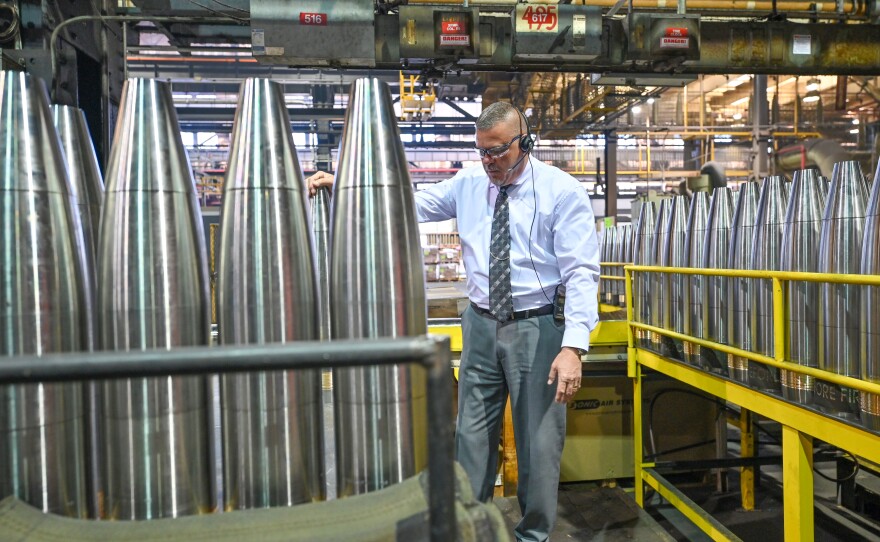SOURCE: IDRW.ORG


In a recent statement to idrw.org, Defence Analyst Ranesh Rajan has urged the Indian Air Force (IAF) to pioneer its own definition of what constitutes a sixth-generation fighter jet. Rajan argues that by setting its own standards, the IAF can tailor its Air Staff Requirements (ASR) to meet specific operational needs rather than adopting definitions set by global powers like the USA and China.
Rajan’s perspective comes at a time when the global aerospace community is actively debating the characteristics that would distinguish a sixth-generation fighter from its predecessors. Traditionally, the evolution of fighter jets has been largely influenced by Western and, increasingly, Chinese definitions, which focus on aspects like enhanced stealth, artificial intelligence (AI), unmanned teaming capabilities, and hypersonic weaponry.
Continue readingSOURCE: IDRW.ORG


In response to the growing challenge of hostile swarm drones on modern battlefields, the Indian Air Force (IAF) has initiated the acquisition process for a specialized “Kamikaze” drone system aimed at protecting vital installations from attacks by enemy unmanned aerial vehicles (UAVs). The IAF has expressed an initial requirement for 20 such systems to safeguard against these emerging threats.
The term “Kamikaze” harkens back to World War II, where it referred to Japanese pilots who engaged in suicide missions by deliberately flying explosive-laden aircraft into enemy ships. In this contemporary context, the term describes drones that are designed for one-way missions, where they crash into and explode near their targets, in this case, enemy drone swarms.
Continue readingSOURCE: AFI


Air Marshal M. Matheswaran, a retired senior official who has been instrumental in India’s defense acquisitions, including the Medium Multi Role Combat Aircraft (MMRCA) program and negotiations for the Fifth Generation Fighter Aircraft (FGFA) with Russia, has shared strategic insights on bolstering India’s indigenous fighter jet capabilities. Matheswaran emphasizes the need for a “risk-sharing” partner to support the development of India’s Advanced Medium Combat Aircraft (AMCA) and enhance the Light Combat Aircraft (LCA) Mk2.
In a detailed discussion with the EurAsian Times, Matheswaran highlighted, “We must choose a partner. We need a risk-sharing partner for AMCA and someone who can fill gaps in the development of LCA Mk2. Companies like Saab might be ready to take the mantle.” This statement points towards a collaborative approach where foreign OEMs (Original Equipment Manufacturers) could play a crucial role in advancing India’s aerospace industry through technology transfer and shared development responsibilities.
Continue readingSOURCE: AFI

Prime Minister Narendra Modi is set to embark on a significant diplomatic visit to France, attending the Artificial Intelligence (AI) Action Summit in Paris on February 10-11, 2025. This visit marks a pivotal moment not only for India’s engagement in global technological discourse but also for its strategic defense collaborations.
France, under the leadership of President Emmanuel Macron, is hosting this summit with the aim of fostering an international conversation on AI’s role in shaping the future. The summit will focus on leveraging AI to drive beneficial outcomes in social, economic, and environmental spheres. With PM Modi’s participation, India underscores its commitment to being at the forefront of AI innovation and governance, aligning with global powers like the US, China, and various Gulf states. This summit is expected to explore themes such as public interest in AI, the future of work, innovation, culture, trust, and global AI governance, with a particular emphasis on mitigating issues like misinformation and misuse of AI technologies.
Continue readingSOURCE: AFI

In recent weeks, a flurry of disinformation campaigns on social media, particularly on X (formerly Twitter), have attempted to sow discord over India’s defense exports. Specifically, ISI-backed Pakistani X handles have circulated a narrative suggesting that an explosion of an Indian BrahMos missile, purportedly at its launch site in the Philippines on July 2, 2024, led Indonesia to reject the missile system. This narrative, however, is unfounded and lacks any substantiation from credible sources.
The claims made by these Pakistani accounts assert that an Indian-made BrahMos missile exploded due to a malfunction, killing several Philippine Navy personnel. This narrative has been propagated with the intent to undermine the credibility of India’s defense products and its international defense collaborations. However, thorough fact-checking and analysis reveal no such event occurred. Filipino media outlets have not reported any such explosion or related casualties, reinforcing the falsehood of these claims.
Continue readingSOURCE: AFI


Hindustan Aeronautics Limited (HAL) has instructed all operators of the indigenous Dhruv Advanced Light Helicopters (ALHs) to keep these twin-engine choppers grounded until the underlying cause of the January 5, 2025, crash in Porbandar is fully determined. This directive comes in the wake of a tragic incident involving an Indian Coast Guard Dhruv helicopter, where three crew members lost their lives.
Preliminary investigations have shed light on the last moments before the crash, with an official revealing that the analysis of the Flight Data Recorder (FDR) and Cockpit Voice Recorder (CVR) from the downed chopper indicates that the pilots “lost control three to four seconds” before the impact. This revelation has prompted a thorough review of the helicopter’s safety and design.
Continue readingSOURCE: AFI


India has officially declared a Notice to Airmen (NOTAM) for an upcoming missile test, set to take place between January 30, 2025, and January 31, 2025. The designated area for this operation extends over a 365-kilometer zone, although specifics regarding the type of missile to be tested have not been disclosed.
The issuance of a NOTAM is standard procedure to ensure the safety of civilian and military aviation by alerting pilots to potential hazards in the airspace. This particular NOTAM indicates that a significant portion of airspace will be restricted during the test, highlighting the importance of the event.
Continue readingSOURCE: RAUNAK KUNDE / NEWS BEAT / IDRW.ORG


The Tejas MkII, an advanced iteration of India’s indigenously developed Light Combat Aircraft (LCA), is set to revolutionize situational awareness and combat efficiency with its cutting-edge information fusion capabilities. Designed by the Aeronautical Development Agency (ADA), the Tejas MkII will integrate a suite of sensors and algorithms to create a comprehensive tactical picture, significantly enhancing operational effectiveness.
The Tejas MkII will be equipped with a comprehensive array of sensors designed to provide a multi-faceted view of the battlefield.
Continue readingSOURCE: RAUNAK KUNDE / NEWS BEAT / IDRW.ORG


After successfully clinching its first export deal for the Akash-1S Air Defence System with Armenia, India is now engaging in negotiations with another prospective buyer, signalling a burgeoning interest in Indian defence technology on the global stage.
The Akash is a medium-range surface-to-air missile (SAM) system developed by India’s Defence Research and Development Organisation (DRDO). It is capable of detecting and tracking enemy aircraft at long ranges and can engage them effectively within a 25-kilometer radius. The system was inducted into the Indian Air Force in 2014 and the Indian Army in 2015, with the Army procuring four units and the Air Force securing seven.
Continue readingSOURCE: RAUNAK KUNDE / NEWS BEAT / IDRW.ORG


Hindustan Aeronautics Limited (HAL) has announced that it will showcase an innovative Optionally-Manned Combat Aircraft (OMCA) based on the modified Kiran Mk2 Stage-II Trainer aircraft at the upcoming Aero India 2025. This development is part of HAL’s broader Combat Air Teaming System (CATS), aiming to revolutionize aerial warfare through advanced unmanned and manned-unmanned teaming capabilities.
The OMCA project envisions transforming the venerable Kiran Mk2 trainer, which has been a stalwart in the Indian Air Force (IAF) for decades, into a versatile combat platform. The aircraft will operate in both Autonomous and Ground controlled modes, offering a flexible asset for various mission profiles. The primary use of the OMCA will be as a decoy system, intended to draw out enemy air defense systems by mimicking the signatures of more valuable combat aircraft, thus exposing and engaging these defenses before the main force arrives.
Continue readingSOURCE: AFI


India’s aerospace industry stands at a pivotal moment, with several ambitious projects like the Regional Transport Aircraft (RTA-90), Multi-role Transport Aircraft (MTA), Tejas MkII, and the Advanced Medium Combat Aircraft (AMCA) program on the drawing board. To see these projects through to fruition, there is a compelling need for a visionary leader akin to the late Manohar Parrikar, whose strategic interventions once revitalized India’s indigenous defense projects, particularly the Light Combat Aircraft (LCA) Tejas.
When Manohar Parrikar took over as Defence Minister in 2014, the LCA Tejas Mk1A was facing significant skepticism from the Indian Air Force (IAF). The IAF had been lukewarm about the project due to delays, perceived deficiencies, and the allure of foreign acquisitions. Parrikar recognized the strategic importance of an indigenous fighter jet for India’s long-term security and technological independence.
Continue readingSOURCE: AFI


India’s defense sector is at a crossroads, with significant potential to emerge as a major exporter of weapons systems. However, to truly leverage this potential, India must revamp its public relations (PR) strategy to ensure its defense exports not only penetrate global markets but also garner positive international perception. The success story of Turkey with its Bayraktar TB2 UAV serves as a compelling case study in effective defense export PR.
Weapons systems, by their nature, can evoke negative connotations. Effective PR can shift this narrative, focusing on the technological prowess, reliability, and strategic advantages of Indian defense products. Turkey managed to create a buzz around the TB2, which, despite being largely composed of foreign components, was marketed as a symbol of Turkish innovation and military might.
Continue readingSOURCE: AFI


Sunita Tools, a leading Indian manufacturer known for its precision engineering and mould base products, has secured a significant contract to supply 100,000 cases for 155-mm artillery shells. The deal was first reported by Business Standard, highlighting a pivotal moment for the company’s expansion into the defense sector.
The order comes from an unidentified defense company, which has issued a letter of intent for the purchase of 100,000 M107 shell casings. This contract stipulates that the full supply must be completed within one year of the prototype approval phase. Initial steps have already been taken, with Sunita Tools receiving government approval to kickstart prototype production, signaling a green light for this venture.
Continue readingSOURCE: AFI


In an era where technology reshapes the contours of conflict, the Indian Army stands at the forefront of innovation, embracing artificial intelligence (AI) and advanced technologies to redefine military operations. The commitment to modernize its forces not only aligns with global defense trends but also positions India as a leader in the new age of warfare.
At the heart of this transformation is the integration of AI into the decision-making process. The Indian Army has developed sophisticated AI systems that enhance situational awareness on the battlefield. These systems analyze vast amounts of data in real-time, from satellite imagery to sensor feeds, providing commanders with actionable insights. This capability allows for quicker, more informed decisions, reducing the time from detection to action and significantly increasing operational effectiveness.
Continue readingSOURCE: IDRW.ORG


In a significant milestone for India’s indigenous Light Combat Aircraft (LCA) program, the eighth of the 18 Tejas Trainer Aircraft ordered by the Indian Air Force (IAF) has successfully completed its first flight. Marked with the designation “LT-5208”, this aircraft took to the skies, marking another step forward in the expansion of India’s self-reliant defense capabilities.
This development follows the first flight of the initial series production trainer aircraft, LT5201, which occurred on 5 April 2023. The Tejas Trainer, designed to prepare pilots for the complexities of flying the combat versions of the Tejas, is a crucial component of the IAF’s modernization efforts.
Continue reading